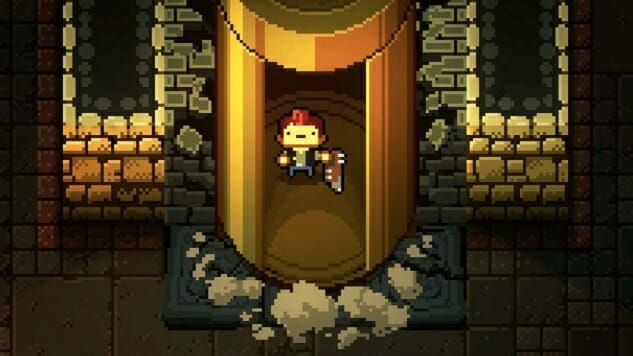Enter the Gungeon: Another Call to Arms

I’m a sucker for big worlds. Larry Niven’s shared universe of Known Space grabbed me at a young age. Dragonlance, Stephen King’s big weird oeuvre, and the strange planes of Magic: The Gathering have all had their hooks deeply planted into my mind at one point or the other (or, well, constantly for decades). The comprehensive, collapsed and strange fictions that are a little bit sci-fi and a little big fantasy (as opposed to a little bit country or a little bit rock and roll) have had an eternal power to make me care about something to an unhealthy degree.
Enter The Gungeon scratches that weird world itch. A little more Douglas Adams than Weise and Hickman, Gungeon places the player smack dab in the middle of some small stories in the context of a giant universe of storytelling. The Hegemony, a dominating galactic force, has in its possession a thing called the Gungeon. It’s a, well, it’s a dungeon full of guns where every object that does not appear to be a gun is most certainly a gun in polymorphed form. At the bottom of the Gungeon is a gun that can kill the past, and each playable character has a strong desire to get that gun to undo a mistake they made somewhere in their life. It’s a strong hook for roguelike gunplay.
Enter The Gungeon is something like the ten thousandth game that appears to be a roguelike, roguelight, or “x genre game with roguelike elements.” What is important is that Enter The Gungeon takes something similar to the level generation format of Spelunky and pairs it with the fast third-person shooting of Nuclear Throne. It is a game that is confident in its lineage and how it has generated a shift in that lineage, and as someone who has spent an immense amount of time in those games, I can appreciate that this game is doing something unique.
Enter The Gungeon evokes the two games I mentioned above, but its skeleton is constructed from a much different genre of game: the bullet hell shooter. Bullet hell games often put the player in tiny little space ships or hover crafts that travel from the left of the screen (or the bottom) into a field of shiny bullets fired from lots and lots of tiny enemy craft. These games require the player to do two things at once: shoot the enemy on the screen so that they stop filling the world with bullets and avoid the bullets that they shoot. “Bullet hell” is quite literal, and the screen becomes a strange game of hot and cold that demands an immense amount of concentration from the player. I am not very good at these kinds of games.
The play of Gungeon starts from that exact position. Each enemy shoots some kind of large, glowing orb in the general direction of the player, and avoiding those orbs is the number one priority at any given moment. It starts out simple, and then it gets much more difficult. Single enemies shooting single bullets are supplanted by little dudes shaped like shotgun shells that shoot shotgun-sized clusters of bullets at you. Then there are color variations that augment the health of the enemies, new enemies altogether, and then new kinds of bullet behaviors. From room to room the game gets more and more complex, but it never drops the very simple watchword of “don’t run into the big glowing bullets.”
I said above that this game has a healthy dose of Spelunky in it, and that’s most evident in the feel of the level generation. Each level of the Gungeon is aesthetically consistent from game to game. Each level will also have the same kinds of things in it: a boss, a shop and some treasure. If you’re industrious, you can save some resources in order to help a character repair the elevator that stretches to the bottom of the Gungeon (although this weird blobby dude has nothing on the literal saint Tunnel Man).
Like Binding of Isaac, the game demands some lateral choices. Every room in the Gungeon leads to other rooms, and you are always locked into your choice of room until you defeat the enemies inside of it. It is a game that forces fight and never allows for flight.
The fighting is in the mode of the twin-stick shooter. You roam the room avoiding bullets while desperately trying to pound your own bullets into your enemies. Each of the four default characters starts with different guns and items that really do feel uniquely different, although those weapons, items and passive skills can all be switched out, augmented or added to through the various shops, shrines and gun-creation stations that litter the Gungeon. What isn’t different between them is the game’s most important skill: the roll.
